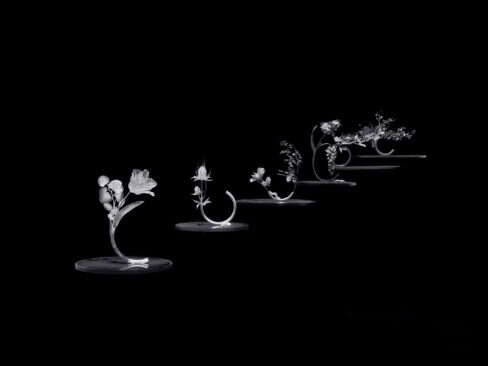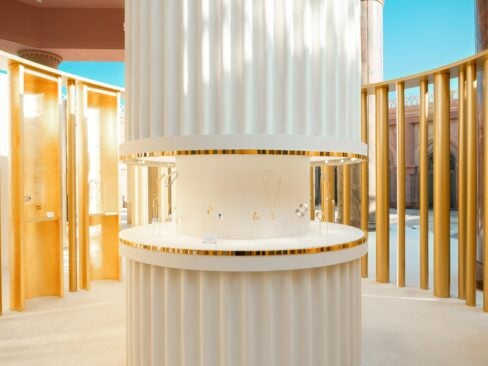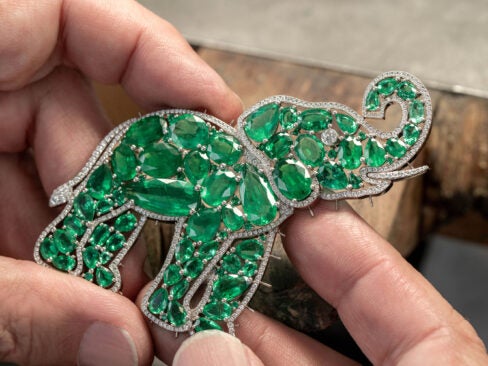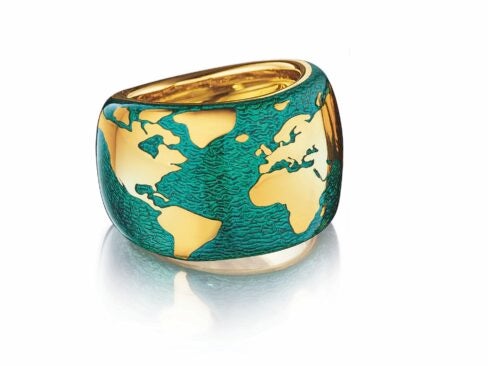In the realm of jewelry, few gems evoke as much allure and prestige as diamonds. The timeless sparkle has adorned the most significant moments in human history, from royal coronations to declarations of eternal love. Yet, in recent years, a new contender has emerged: lab-grown diamonds. As technology advances and environmental consciousness grows, the age-old debate of tradition versus innovation takes center stage.
For centuries, natural diamonds have been held as the epitome of luxury and exclusivity. Formed about a hundred miles beneath the Earth’s surface under intense heat and pressure about three billion years ago, natural diamonds were brought close to the surface through volcanic eruptions. Each natural diamond is unique, bearing the marks of its journey through time. Natural diamonds are also rare and, at some point in time, finding them may prove impossible — endowing them with enduring value.
[See also: The Sparkliest Jewelry We Saw at Paris Couture Week]
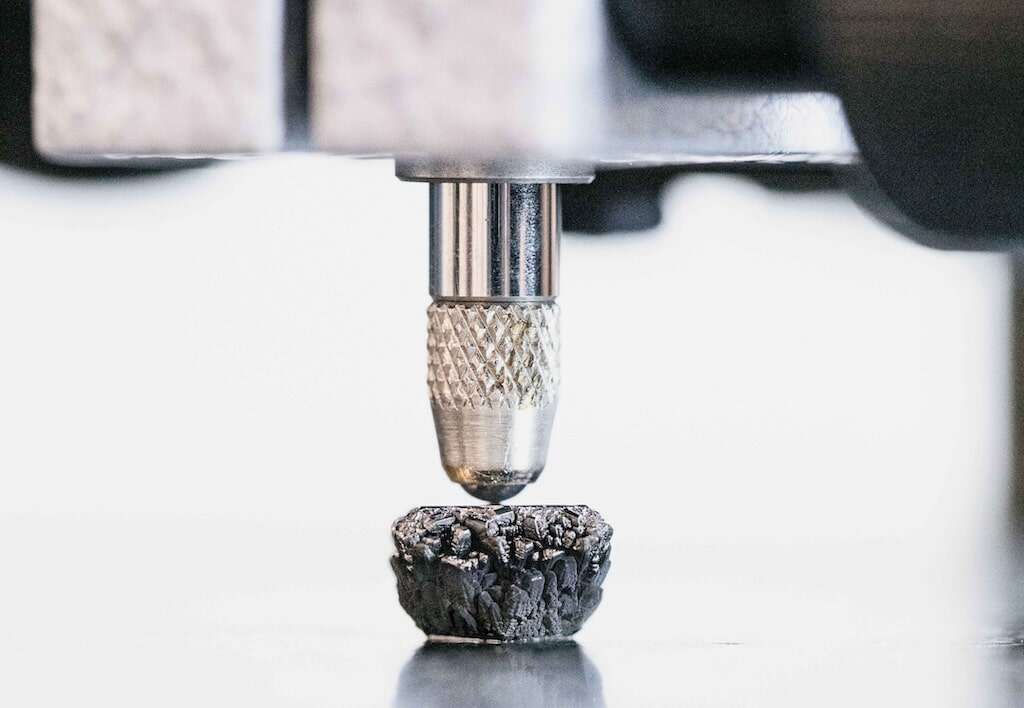
What are lab-grown diamonds?
Lab-grown diamonds, also known as synthetic or cultured diamonds, are created through advanced technological processes that replicate the conditions under which natural diamonds form. By starting with a diamond ‘seed’ (a slice of a natural diamond) and replicating heat and pressure conditions, or by using carbon and other gases, the end result is lab-grown diamonds that possess the same chemical composition, crystal structure and optical properties as their mined counterparts but are produced in controlled laboratory environments.
As a result, companies creating lab-grown diamonds are able to mass-produce them — translating to highly affordable pricing. The lab-grown vs natural diamonds debate is not merely about their origin but also about the values they represent. Traditionalists argue that natural diamonds hold an inherent mystique and sentimental value, as well as inherent value, that cannot be replicated by their lab-grown counterparts.
“One of the beauties of a natural diamond is that each one is individual. There are no two natural diamonds in the world that are the same,” says David Kellie, CEO of the Natural Diamond Council (NDC), a global nonprofit organization committed to educating consumers about real, rare and responsible values inherent in natural diamonds.
[See also: How Ethically Sourced Diamonds Are Changing the Industry]
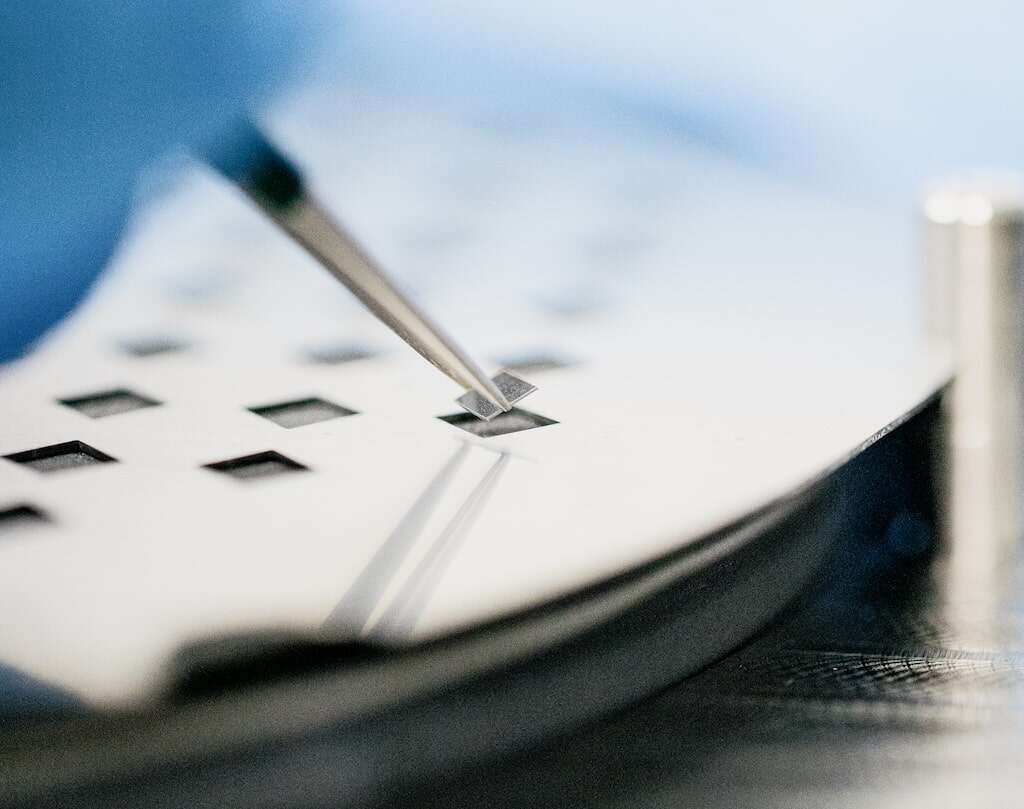
“Nature doesn’t create the same thing twice. Whether it’s the inclusions in the diamond, or the size or color of the diamonds, they are never replicated. So, a diamond isn’t just rare in terms of the number to be mined, but also in terms of their individuality.”
Conversely, proponents of lab-grown diamonds champion innovation. While lab-grown diamonds have been made for decades — primarily used for diamond-cutting tools and other purposes — it is only recently that companies were able to develop gem-quality lab-grown diamonds. One of the main benefits of lab-grown diamonds comes in the pricing structure. Supporters of these stones argue that the technological process has made lab-grown diamonds affordable and accessible to a broader audience.
“Because lab-grown diamonds are a technology product, the cost is significantly less than a natural diamond,” said Antoine Borde, CEO of Lightbox, an Oregon-based company that was founded in 2018 and is now one of the largest producers of lab-grown diamonds. He noted that today, approximately 10% of the overall diamond market is in lab-grown diamonds — amounting to an approximately $12bn business. “Today, one engagement ring out of every two sold in the US is a lab-grown diamond.”
[See also: Chanel Reveals Haute Joaillerie Collection Inspired by Sport]
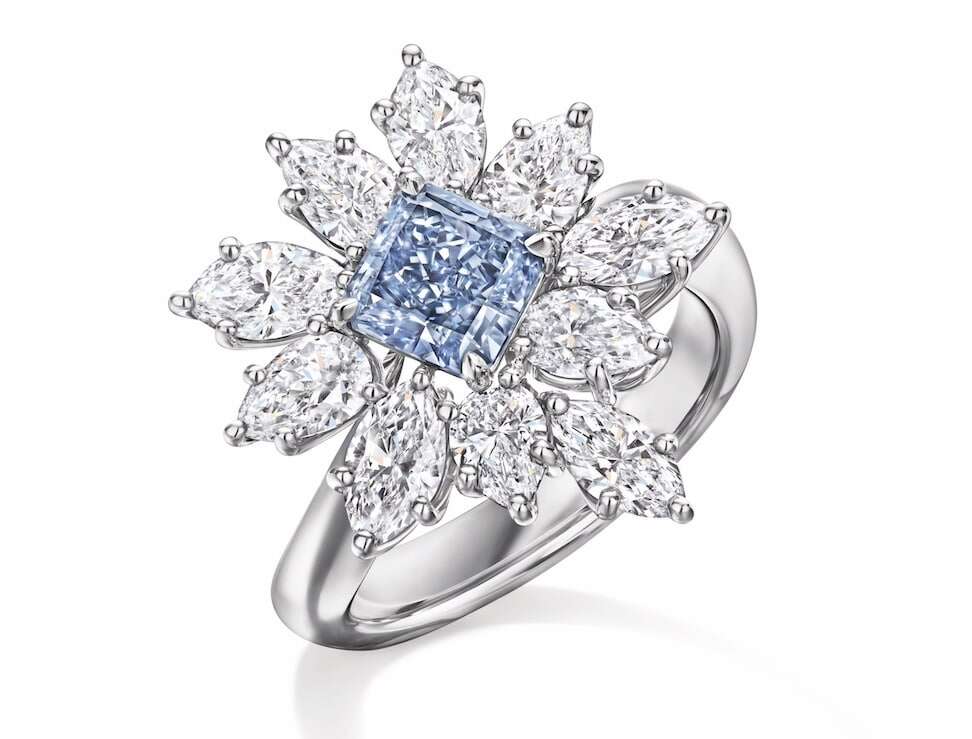
Harry Winston floral-inspired natural blue diamond ring with petals of fancy-cut pear and marquis colorless diamonds set in platinum / ©Harry Winston
Lab-grown vs natural diamonds: The price difference
Because of the pricing structure, someone who could not afford a natural diamond engagement ring may well be able to purchase a lab-grown diamond. At Lightbox, a one-carat lab-grown diamond (as of press time) is approximately $800 a carat. “And it’s linear pricing in lab-grown diamonds,” said Borde. “So, you would pay $1,600 for a two-carat stone, and so on.”
The same one-carat natural stone would cost about $5,000 to $6,000, and the pricing is not linear. “With natural diamonds, larger stones are much rarer and therefore more expensive per carat. The cost of a two-carat stone, for instance, has nothing to do with the cost of a one-carat diamond,” said NDC’s Kellie.
[See also: Chopard at Cannes: A Legacy of Artistry and Cinema]

Additionally, a natural diamond may hold its value and could increase in value, especially once there are no more to be mined. Of course, just like a new car, a natural diamond can lose 10% or slightly more of its value once it walks out the door. Currently, a lab-grown diamond — because of the massive amounts being produced — generally loses its resale value almost immediately, dropping by 30 to 40%, according to experts.
The most common use these days for lab-grown diamonds, because of their affordability, is in high-end fashion jewelry that marks a great alternative for travelers who may not want to bring their ‘good’ diamonds on vacation with them.
“Chemically and optically, a lab-grown diamond is a diamond, so it is good for a first-time purchase. But it’s not sexy since it’s being stamped out in a factory,” said Jennifer Heebner, a veteran journalist in the jewelry industry. “But it is great for travel jewelry. A person can buy a lab-grown diamond necklace or bracelet and it looks exactly like the real thing, and they don’t have to worry about traveling with their more expensive natural diamonds.”
Additionally, Lightbox’s Borde said that because of the price accessibility, “consumers can now stack jewelry products such as rings and bracelets without spending too much money.”
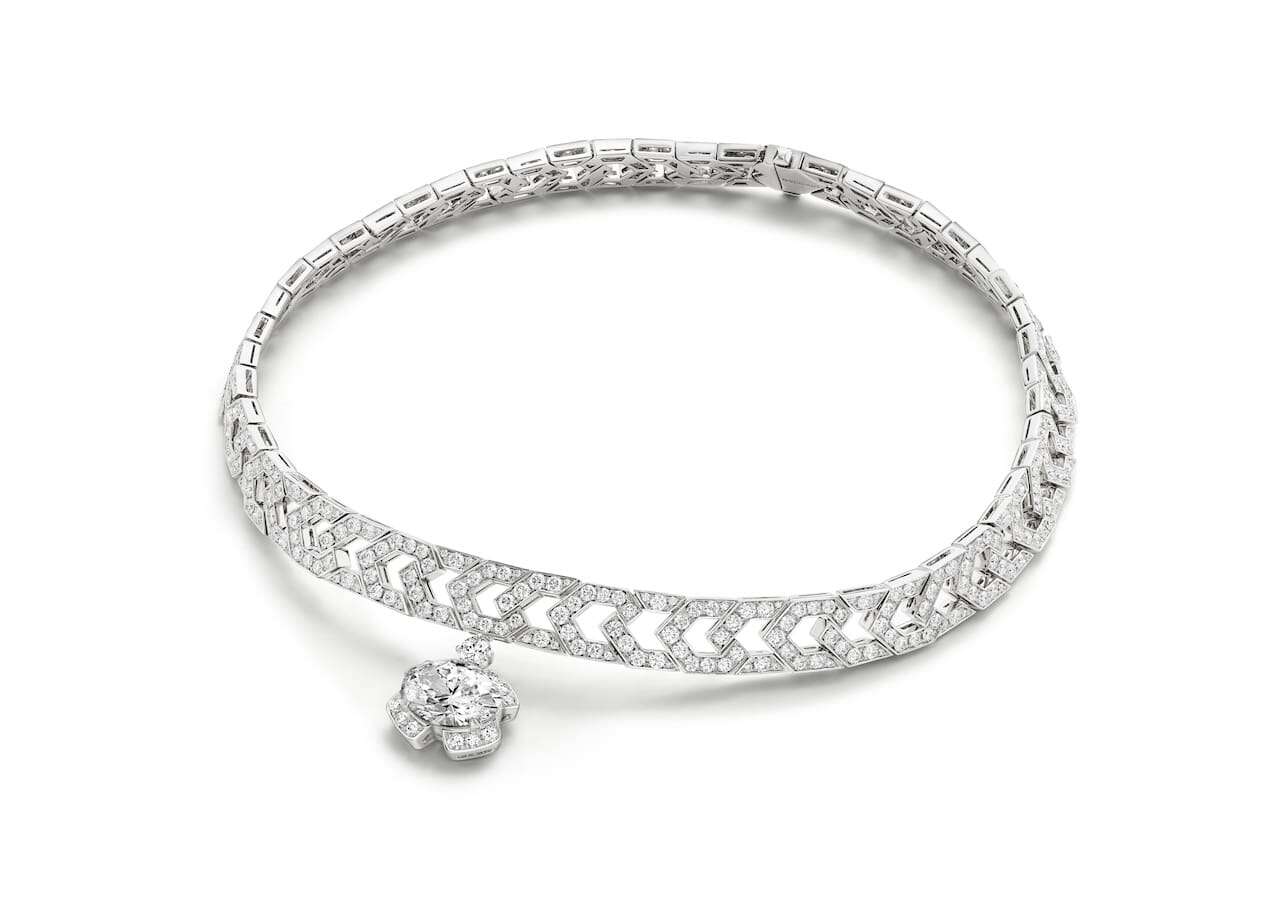
Sustainability
Initially, supporters of lab-grown diamonds felt they were jumping on a sustainability bandwagon because production companies vowed to offer consumers peace of mind — promising that their purchase would align with their ethical and environmental values. But that might not exactly reflect what is happening.
Conscientious consumers should be aware that not all lab-grown diamonds are created in sustainable environments. While Lightbox is using 100% renewable wind power energy, many other producers are in countries such as China or India, where they are leaving a huge carbon footprint due to their production methods.
“We have a very low total emission. It is 30 grams of C02 per carat, which is extremely low, and we are on target to be carbon zero by 2030,” said Borde. “But not all labs are equal. We see some growers in India with more than 10 times the level of emissions that we have. Some are 300 grams of C02 per carat.” To put that into perspective, Borde says that in its Portland facility, the company produces approximately 250,000 carats per year. “We have to be just as transparent as the natural diamond businesses in order to ensure our customers are informed.”
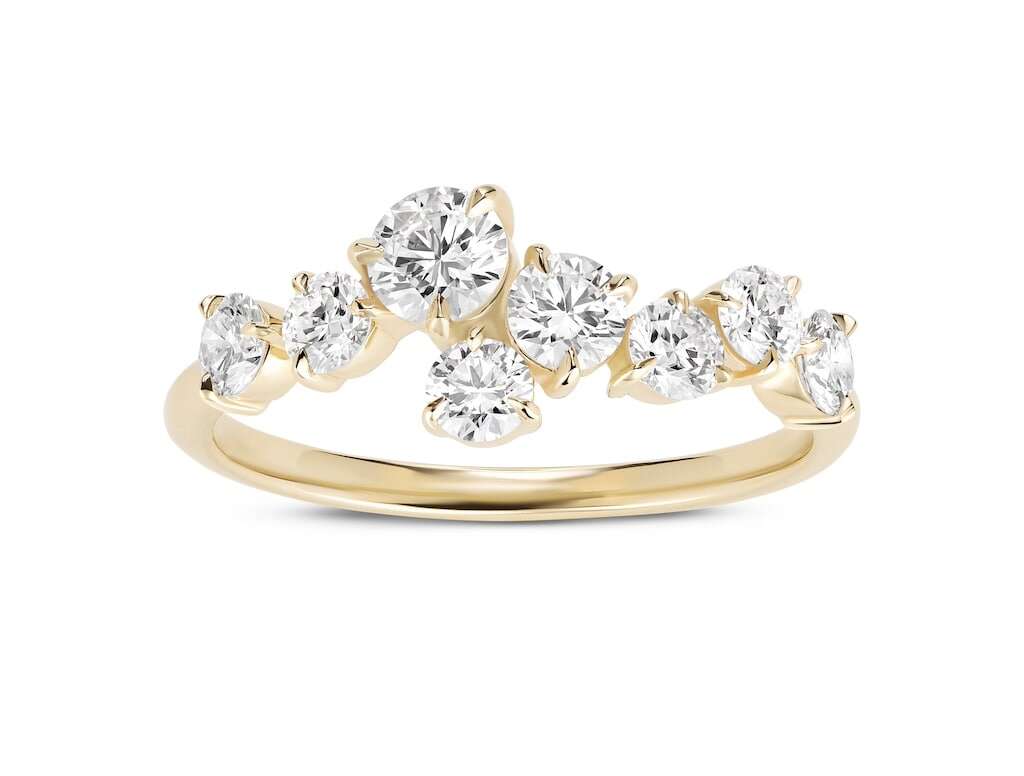
For those who feel the natural diamond industry is not sustainable, there is an entirely different picture. While natural diamonds are mined from the earth — like every other mineral we use — main mining companies are using sustainable practices, employing the Kimberley Process to prevent conflict diamonds from coming into the mainstream, closing mines and recovering the land so there is no evidence that they had been there, and promoting health, education and vital jobs in the mining communities.
“There are about 10 million people in the world whose livelihoods depend on natural diamonds,” said Kellie, noting that when a diamond is mined in a particular country, and sold, the government keeps a good percentage of the profit to use toward infrastructures and the communities.
“Approximately 80% of the value of a rough diamond stays within the region [where] it’s been found. People should be able to feel good about the purchase of a natural diamond because it makes the mining communities much stronger. Through the income in the region to the governments, they can build roads, schools, and other infrastructures.”
Kellie notes that environmental and wildlife protection comes into play in these regions. “I don’t know if there is another industry that does what this industry does in terms of the level of economic and environmental provisions that diamond mining does for the local communities.”
[See also: Chopard at Cannes: A Legacy of Artistry and Cinema]







